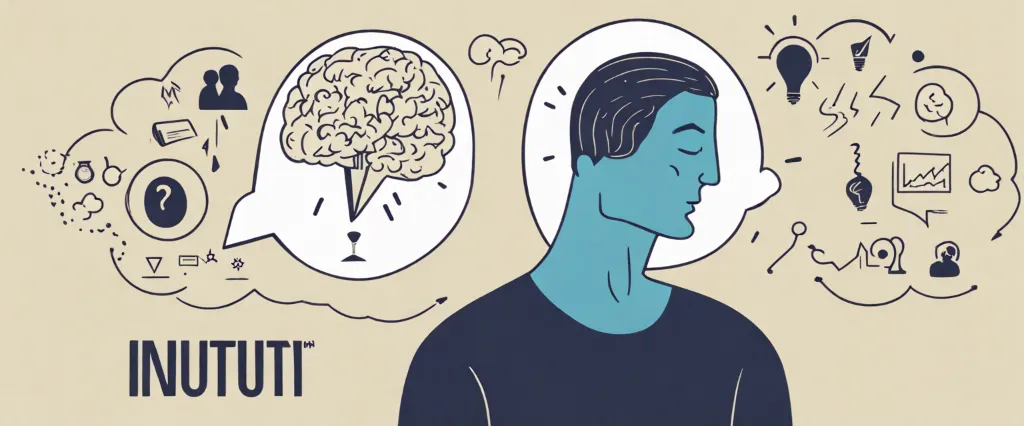In “Stillness Speaks” Eckhart Tolle delves deeper into the essence of his groundbreaking work, “The Power of Now,” to guide readers towards a place of profound peace and presence. This spiritual guidebook offers insights and practices that encourage individuals to connect with the stillness within themselves, fostering a profound transformation in their lives. As one of the most renowned and influential teachers of our time, Eckhart Tolle has revolutionized the way we understand and experience spirituality, bringing ancient wisdom into the present moment. With his unique perspective and simple yet profound teachings, Tolle has become a beacon of light for millions seeking inner peace and liberation from suffering.
Chapter 1: The Power of Now
Tolle argues that the present moment is all we truly have, as the past and future are mere abstractions of the mind. He explains that our minds are constantly engaged in thinking, analyzing, and recalling past events or anticipating future ones. However, this constant mental activity leads to dissatisfaction, as we become prisoners to our thoughts and emotions.
The author introduces the term “pain body,” which refers to the accumulation of past emotional pain and trauma that we carry within us. This pain body feeds off negativity and seeks to perpetuate itself by continuously revisiting painful memories or projecting negative scenarios onto the future.
Tolle suggests that true liberation can be found by embracing the power of now and shifting our attention away from the mind’s incessant chatter. By doing so, we can access a state of inner stillness and peace. This presence enables us to fully engage with life without being burdened by past grievances or future worries.
Furthermore, Tolle explains that beyond our minds, there is a deeper dimension of consciousness, which is eternal and unchanging. Connecting to this deeper reality requires quietening the mind and focusing on the present moment. In doing so, we allow the essence of who we truly are to shine through.
The reader is encouraged to let go of the mind’s constant activity and embrace the power of now, enabling them to transcend suffering and access a deeper state of consciousness and stillness.
Chapter 2: Embracing Silence and Stillness
Tolle explains that true silence is not simply the absence of noise but the presence of a deep inner peace and calm. He encourages readers to become aware of the chatter of their minds and learn to silence it through meditation and mindful practices. By experiencing moments of silence, we can connect with our true essence and tap into the endless reservoir of wisdom and creativity that lies within.
The author emphasizes the significance of embracing stillness in our daily lives. He reveals that when we act from a place of stillness, our actions become more purposeful, grounded, and in alignment with our true selves. Tolle encourages readers to observe their habits of constant busyness and urges them to cultivate the habit of being still, even in the midst of their daily activities.
Furthermore, Tolle discusses how stillness can transform our relationships. By being fully present and still when interacting with others, we can listen more deeply, empathize more authentically, and connect on a much deeper level. He emphasizes that silence and stillness allow us to perceive the essence in others, beyond their external appearances.
Chapter 3: Dissolving the Ego
Tolle begins by stating that the ego is our false sense of identity, which is built upon our thoughts, beliefs, and self-image. He emphasizes that the ego is responsible for most of our suffering and explains how relinquishing identification with it can bring peace and stillness to our lives.
The chapter highlights how we often identify ourselves with our thoughts, emotions, and possessions, leading to a constant desire for more, better, or different experiences. According to Tolle, this identification keeps us trapped in a cycle of wanting and striving, preventing us from experiencing the peace and contentment that arises from living in the present moment, or what he calls “stillness.”
Tolle suggests that dissolving the ego begins by observing our thoughts and emotions from a place of conscious presence. By being aware of the egoic mind, we can disengage from its pull and gain insight into the unconscious patterns that control our lives. He emphasizes that true liberation comes from transcending identification with the ego and connecting with the deep stillness within.
Furthermore, Tolle explains that a dissolution of the ego is not about eradicating it entirely but rather diminishing its dominance over our lives. By becoming aware of the egoic patterns, we can detach from them, thereby freeing ourselves from their grip.
Through awareness, presence, and detachment, we can experience the tranquility of stillness and find liberation from the constant striving and dissatisfaction that the ego perpetuates.
Chapter 4: Finding Inner Peace and Serenity

The chapter begins by explaining that peace is not something we can strive for or attain through external achievements, but rather it is a state of being that arises from the realization of our true nature. Tolle suggests that we often seek fulfillment through external possessions, accomplishments, or relationships, but these are only temporary sources of happiness. He points out that true peace is available in the present moment, and it can be accessed by quieting the mind and cultivating awareness.
Tolle explains that the mind is often preoccupied with thoughts, worries, and regrets, which can hinder our ability to experience peace. By practicing stillness, which involves observing our thoughts without judgment, we can begin to transcend the constant mental chatter and connect with our inner essence. This inner stillness allows us to tap into a timeless and infinite source of peace.
Additionally, Tolle highlights the importance of being present in the current moment. He explains that true peace can only be experienced by fully immersing oneself in the present moment rather than dwelling on the past or worrying about the future. He encourages readers to embrace the present moment by cultivating a deep sense of acceptance and surrender to life as it unfolds.
Chapter 5: Cultivating Presence and Mindfulness
Tolle emphasizes that true peace and spiritual awakening can only be found in the present moment, and through the practice of presence, we can connect with the essence of our being.
The chapter starts by highlighting the importance of being fully present in everything we do. Tolle encourages us to bring full awareness to ordinary activities such as walking, eating, or even doing the dishes, as these can become gateways to experiencing the depth of stillness within.
Tolle introduces the concept of mindfulness, which involves becoming fully present and accepting of the present moment as it is, without judgment or resistance. He emphasizes that the present moment is all that truly exists and that it is through connecting with this moment that we can access the profound peace and stillness within.
The chapter also discusses the practice of meditation and how it can help us cultivate presence and mindfulness. Tolle suggests starting with short periods of meditation, gradually increasing the duration as we become more comfortable with stillness. He highlights the importance of finding a balance between being present and allowing thoughts to arise without getting caught up in them.
In cultivating presence and mindfulness, Tolle explains that we can begin to shift our identification from the egoic mind to our true essence, which is beyond thoughts and concepts. This identification allows us to connect with the deeper stillness and peace that lies within us.
By being fully present and accepting of the present moment, we can tap into the depth of our being and experience true spiritual awakening.
Chapter 6: Transcending Thought and Emotion
He suggests that true liberation lies in recognizing that one’s essence is beyond these mental constructs.
The chapter starts by emphasizing the importance of observing one’s thoughts and emotions without getting entangled in them. Tolle highlights that merely being aware of the thoughts and emotions arising within is an act of presence, which helps to create a gap between oneself and the mind. This gap allows for the possibility of awakening to a deeper level of consciousness.
Tolle asserts that most thoughts and emotions are egoic in nature, arising from a desire to strengthen one’s sense of self. However, he points out that true fulfillment and lasting peace cannot be found in the realm of thought. Instead, he invites the reader to prioritize the state of stillness that lies beyond the mind.
By shifting the focus from thought identification to a deeper level of consciousness, Tolle suggests that one can experience the underlying presence that transcends thought and emotion. He describes this presence as an intelligent energy field or pure awareness. Tolle explains that accessing this stillness allows for a deeper connection with oneself and the world around, opening the door to a state of peace and fulfillment.
The chapter concludes with Tolle encouraging readers to cultivate the practice of presence and explore the stillness that lies within them. By disengaging from the constant stream of thoughts and emotions, individuals can tap into their true essence and experience the profound peace that comes with transcending these mental constructs.
Chapter 7: Connecting with the Essence of Being
Chapter 7 of “Stillness Speaks” by Eckhart Tolle, titled “Connecting with the Essence of Being,” focuses on the concept of transcending the identification with the mind and the ego to access the essence of our true being.
Tolle begins by emphasizing that language and thoughts are products of the mind, and while they are instrumental in our everyday lives, they can also distract us from experiencing the depth of our being. He encourages the reader to be present and cultivate an awareness that surpasses their thoughts and allows a connection to the present moment.
Tolle explains that when we become aware of our thoughts and observe them without judgment, it creates space for stillness to arise. This stillness is the essence of our being, our true nature. It is not something that can be grasped or understood through the mind; instead, it requires a direct experience and a shift in consciousness.
The author highlights the importance of practicing the art of presence in daily activities. Whether it’s eating, washing dishes, or observing nature, engaging fully in the present moment allows us to connect with our essence. By accepting and surrendering to what is, we can experience the depth and peace that resides within stillness.
Tolle explains that the essence of being is not dependent on any external circumstances. It is an ever-present source of joy that is independent of any situation or experience. By recognizing this, we can detach from the identification with our mind and ego, and instead, find contentment and fulfillment in the simplicity of just being.
It emphasizes the importance of observing thoughts without judgment, engaging fully with the present moment, and realizing that true fulfillment rests in the depth of stillness within us all.

Chapter 8: Living in Alignment with Life’s Flow
The chapter begins by emphasizing that true surrender is not an act of weakness or giving up, but rather a powerful act of conscious choice and acceptance. It involves letting go of the ego’s need for control and allowing life to unfold naturally. Tolle explains that when we surrender, we open ourselves to the deeper wisdom and intelligence of the present moment.
He further discusses the ego’s resistance to surrender, which often arises due to fear and the desire for security. However, he highlights that the more we resist, the more we create suffering for ourselves. Surrendering allows us to experience a deep sense of peace and harmony, as we align ourselves with the flow of life.
Tolle also explores the relationship between surrender and the cessation of thinking. By surrendering to the present moment, we can transcend the incessant chatter of the mind and discover the stillness within. This stillness brings clarity and enables us to act from a place of presence and intuition.
The chapter concludes by emphasizing that surrender is not something to be achieved in the future, but rather can be practiced in each moment. By surrendering to what is, we can experience true freedom and become aligned with the intelligence and rhythm of life itself.
After Reading
In conclusion, Stillness Speaks by Eckhart Tolle is a profound and enlightening spiritual guide that encourages readers to embrace the power of stillness in their daily lives. Tolle illuminates the endless benefits of stillness, such as finding inner peace, deepening one’s connections with others, and accessing higher states of consciousness. He reminds readers of the importance of living in the present moment and shedding their attachments to the past and future. Through Tolle’s wisdom and teachings, readers are empowered to cultivate stillness and discover their true essence beyond the noise and distractions of the modern world. Ultimately, Stillness Speaks serves as a transformative tool for those seeking spiritual growth and a greater sense of inner peace and fulfillment.
Book Recommendation:
1. Sources of Power” by Gary Klein
In “Sources of Power,” Gary Klein takes readers on a captivating journey into the world of decision-making. Drawing from extensive research and real-life examples, Klein challenges commonly held beliefs and offers insights into how experts make critical decisions under pressure. This thought-provoking book explores the power of intuition, situational awareness, and the ability to adapt to complex and unpredictable circumstances.
2. Essentialism” by Greg McKeown
In a world overwhelmed by busyness and constant demands, “Essentialism” provides a much-needed perspective on prioritization and focus. Greg McKeown encourages readers to eliminate non-essential activities, prioritize what truly matters, and develop the discipline to say no. By embracing the power of less, readers can streamline their lives, increase productivity, and achieve greater fulfillment.
3. The 5 AM Club” by Robin Sharma
“The 5 AM Club” offers an inspiring framework for personal transformation and success. Robin Sharma introduces readers to a group of individuals who meet at 5 AM to practice mindfulness, exercise, and plan their days with intention. Through the engaging story, Sharma outlines practical tools and strategies to achieve peak performance, develop good habits, and lead a purpose-driven life.
4. Blink: The Power of Thinking Without Thinking” by Malcolm Gladwell
In “Blink,” Malcolm Gladwell explores the fascinating concept of rapid cognition and the power of intuition. Through captivating stories and compelling research, Gladwell reveals how our subconscious mind often leads us to accurate decisions in the blink of an eye. This book delves into the cognitive processes behind snap judgments and provides valuable insights that challenge conventional thinking.
5. Atomic Habits” by James Clear
In “Atomic Habits,” James Clear offers a practical guide to building and sustaining positive habits. By emphasizing the power of small incremental changes, Clear explains how tiny adjustments can lead to remarkable transformations over time. With practical strategies, scientific evidence, and relatable anecdotes, this book helps readers understand the mechanisms of habit formation and provides actionable steps for making positive changes in their lives.
These five books, Sources of Power” by Gary Klein, Essentialism” by Greg McKeown, The 5 AM Club” by Robin Sharma, “Blink” by Malcolm Gladwell, and Atomic Habits” by James Clear, cover a wide range of topics including decision-making, focus, peak performance, intuition, and habit formation. Each book offers unique insights and practical advice for personal growth and professional success.




